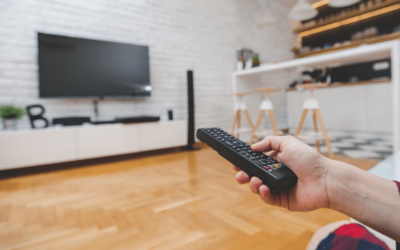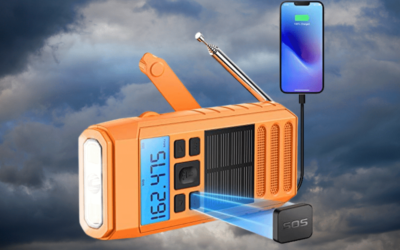Tired of dealing with power surges that fry your electronics? With the right surge protector, you can protect your gadgets – and save yourself from the headache of needing to replace them! Welcome to our blog, where we discuss all things related to finding the best surge protector for your needs – so you can stay powered up and worry-free.
About Surge Protectors
Surge protectors are essential to protecting your devices and electronics from sudden, high-voltage spikes in electricity. When power surges hit, they can cause irreparable damage to electrical appliances, and even cause a fire. Investing in a good quality surge protector will provide you with protection against damage and also peace of mind.
What is a Surge Protector? A surge protector is an electronic device installed to protect your electronics from power surges or transients that can occur due to lightning storms, short circuits, or other causes. By acting like an “electronic filter” it protects your valuable electronics from power-related damage and keeps them functioning properly. Surge protectors come in different shapes and sizes depending on their usage – some protect individual items such as computer monitors while others protect entire rooms or home networks.
When shopping for a surge protector, the number of joules (a measurement of energy) they can absorb before they fail should be considered carefully – the more joules the better when it comes to protection against surges! Additionally, look for features such as sliding outlet covers, indication lights, remote control capability and multiple outlets with both coaxial protection ports and FireWire ports for protection of computer networks and Wi-Fi routers. Make sure the surge protector has necessary safety certifications as well as any relevant warranties or guarantees – some manufacturers offer lifetime warrantees on certain products!
Benefits of Using a Surge Protector
When the electricity in your home travels through the power lines, it can encounter anything from bad weather to electrical faults that cause sudden surges of energy. Such surges are one of the most common causes of damage to electronic devices and appliances. Therefore, it is essential to use a surge protector in order to reduce your risk of experiencing such costly damages.
Surge protectors help to protect electronics from power surges by providing a layer between them and your wall outlet. They absorb the electrical charge that exceeds their rating — protecting anything connected to them — and dissipating the excess electricity safely into the ground before it reaches sensitive devices. This means that even if a surge passes through your wall outlet, you will be protected from its damaging effect.
In addition to damage prevention, surge protectors can also provide additional safety benefits. When plugged into an appropriate port on an outlet, they alert you when wiring is loose or disconnected, helping you identify potential problems or hazards around your home before they put anyone in danger.
Surge protectors are also great for convenience and save time as you’re able to plug multiple devices into them and switch them all off at once just by flipping one switch instead of disconnecting each item individually. This is particularly handy if there’s something plugged into a difficult-to-reach socket or location — like behind furniture — saving time when unplugging before bedtime or long trips away from home
Types of Surge Protectors
Surge protectors are valuable tools for households, businesses and workplaces that can provide a cost-effective way of protecting electronics from sudden power surges. Depending on your needs, there are several types of surge protectors available in the market.
Top 3 Whole Home Surge Protectors in 2025
The most basic type is the whole home surge protector which is designed to guard the electrical system of an entire residence or commercial building. Such protectors are installed at the point where electricity enters the building it’s usually out of direct sight, so you don’t really need to choose one with a specific design in mind.
Next comes outlet surge protector or strip surge protector, which is a small device used to connect multiple electrical devices or appliances into a single outlet. Most have between seven and twelve outlets connected to one low-voltage breaker built into them, providing an ideal solution for those who need expanded power access for multiple devices or appliances in a single location.
Top 3 Outlet Surge Protectors in 2025
Top 3 Power Strip Surge Protectors in 2025
Top 3 Surge Protectors with USB Ports in 2025
Finally there’s also specialized USB port surge protectors which offer USB charging ports as well as AC outlets – they let you charge any device while not taking up extra outlets on wall sockets and other bulky wall adapters. If you’re working with limited space, this type of protector might be perfect for your situation. As its name implies, it primarily protects against power surges but it also works as a reliable divider where both data transfer and charging can occur simultaneously when using USB cables so you’ll get both protection and convenience when using such protectors.
How to Choose the Best Surge Protector
When shopping for the best surge protector, there are several important factors to consider. First and foremost, the surge protector you choose should have adequate protection for your device or electrical appliance. This means it should be rated at a sufficient voltage and amperage capacity for whatever it is you’re protecting. Additionally, some surge protectors provide additional features such as data-line protection for computers and phone lines.
Once you’ve narrowed down your choices based on power ratings, it’s then important to look at other features such as price, convenience features like number of outlets and length of cord, warranty coverage, energy saving features, ease of use (such as indicator lights), fire retardant housing, noise filtering capabilities, etc. Depending on how you will use the surge protector and what type of devices it will be used to protect – all these factors need to be taken into consideration when finding the best one.
Finding a good quality surge protector that meets your requirements doesn’t have to be difficult if you just remember to check the power ratings first and then look at other desirable features that may provide added value or benefit depending on your application needs.
Tips for Installing and Maintaining Surge Protectors
Installing and properly maintaining a surge protector is essential for preventing your electronics from being damaged due to fluctuations in power. There are several steps you should take to ensure your surge protector is functioning correctly and protecting your equipment.
Ensure Proper Outlet Connection: Surge protectors should be plugged directly into a wall or power strip outlet, not into an extension cord or another surge protector. You will also need to check that the plug fits snugly in the outlet and isn’t loose.
Check the Joules Rating: All surge protectors have a joules rating, which indicates how much energy it can absorb before its protective capacity becomes overloaded. It’s important to ensure that this rating is high enough for the equipment you are powering. A higher rating gives you better protection against the unpredictable spikes of electricity that often cause damage.
Examine the Features: Different models of surge protectors come with different features, so consider what type of protection is necessary for your electronics. Look for units that feature coax cable connectors, USB ports, as well as power indicators that let you know when the unit is functioning correctly.
Update Your Surge Protector: As technology advances, newer models of electronics require higher levels of power protection than older models did. Be sure to upgrade your surge protector if it doesn’t meet your equipment’s needs adequately– otherwise, it may not work correctly or provide adequate protection against surges and spikes in power levels.
Perform Regular Maintenance: Don’t forget to routinely test your surge protector’s proper operation by plugging in an inexpensive home appliance (such as a lamp) and checking that it works correctly during occasional safety checks. Also make sure all wires are tucked away safely out of reach from children or pets!
Common Surge Protector Problems
Surge protectors, or surge suppressors, are invaluable for prolonging the life of your electronic equipment by blocking excess power. Properly installed and maintained, a surge protector can help protect your equipment from power surges caused by lightning strikes, downed power lines and tripped circuit breakers. However, they are not infallible and can sometimes cause some problems that need to be resolved in order to continue protecting your devices. Common issues associated with surge protectors include:
-Failed components – Over time components can fail within the surge protector leading to poor performance. These components should be replaced as needed to ensure ongoing protection.
-Power Led Not Working – The LED indicator light on the surge protector is designed to help you identify when there is an electrical issue at the outlet it’s connected to. If the LED does not come on or blinks constantly this may indicate a problem with the outlets power supply which should be addressed immediately for optimal protection of your devices.
-Damaged Outlets or Connections – Damage could cause an abrupt loss of power or significantly reduce output from an outlet. If your surge protector’s outlets or connections become damaged it should be replaced immediately in order to provide optimal safety for plugged-in devices.
Surge Protector Safety Tips
Surge protectors, also known as surge suppressors, act as a barrier between electrical devices and hazardous power surges. In order to protect your valuable equipment, it’s important to understand what to look for when selecting the best surge protector. Here are some tips that can help you choose the right one:
1. Make sure the surge protector is UL-listed – UL stands for Underwriters Laboratories, a non-profit organization dedicated to safety standards of electrical products. A UL listing means the device has met their safety requirements and should provide reliable protection against sudden surges in voltage.
2. Look for joule rating – The higher the joule rating on a surge protector, the greater level of protection it can provide against dangerous power spikes. Joules measure how much energy can be absorbed by the surge protector before it trips off. It’s important to consider a high joule rating because many household electronics require more protection than others .
3. Check for other features – A good quality surge protector comes with features such as indicator lights that indicate if it is active or not, and multiple outlets that can accommodate various cords and plugs of different shapes and sizes for better versatility . Additionally, most modern surge protectors are designed to block RF and EM interference from external sources , keeping your electronics secure from unwanted noise .
By following these simple tips , you’re sure to find a reliable piece of equipment that’s able to keep your electronic devices safe from damage due to unexpected power congestion or damaging voltage peaks .
Conclusion
When selecting a good surge protector, it is important to consider factors such as how many outlets there are, how much power it can supply, what type of protection technology is used, and if additional features like surge suppression or RJ45 jacks are necessary. By understanding the various technologies available and what you need from a surge protector, you can ensure that you make an informed decision when purchasing your device.
Additionally, using an established brand can provide extra peace of mind by confirming that the product has been tested for safety and performance. Reading product reviews from other customers is also recommended in order to gain insight into a product’s true quality and performance. Making the right selection in surge protection will go a long way towards helping you ensure your valuable electronic devices stay safe from power spikes or age-related decline.













